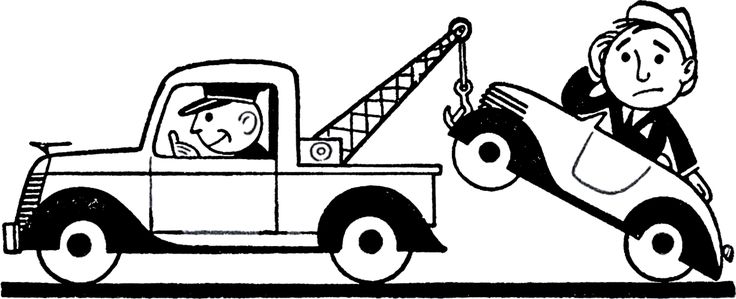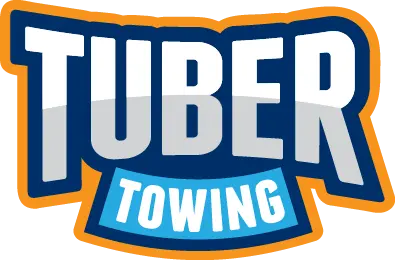Secure Vehicle For Towing

Secure vehicle for towing the right way with these 5 critical steps to avoid costly damage and ensure safety during transport. Learn how proper preparation makes your roadside assistance or long-distance tow stress-free and secure.
At Tuber Towing Recovery and Services, our certified professionals handle every towing situation with precision and care. In this guide, we’ll break down the essential steps and best practices for securing your vehicle for a tow—whether you’re doing it yourself or just want to know how professionals keep your car safe.
For real-life towing demonstrations and expert safety tips, visit and subscribe to our YouTube channel, TuberTaylor.
1. Assess the Type of Tow Required
Before securing the vehicle, it’s important to identify the right towing method. The type of tow depends on your vehicle’s drivetrain, condition, and the terrain.
- Flatbed towing is the safest option for most vehicles, especially all-wheel drives or luxury cars.
- Wheel-lift towing is common for short distances and lighter vehicles.
- Dolly towing can be effective for front-wheel-drive cars when done properly.
Need help deciding which tow is right for your vehicle? Learn more about flatbed and specialty towing services here.
2. Prepare the Vehicle for Loading
Before any securing happens, the vehicle must be ready for loading. Here’s what needs to be done:
- Turn off the engine and put the vehicle in neutral or park depending on the towing method.
- Apply the emergency brake only if the vehicle is not being lifted at the drive wheels.
- Remove loose or personal items from the vehicle to prevent damage or theft.
- Close all windows and lock the doors (unless directed otherwise by the operator).
Preparation reduces the chance of damage during the tow—and ensures your insurance stays valid if something goes wrong.
3. Use Quality Tow Straps and Chains
When securing a vehicle, quality materials are a must. Weak or frayed straps, rusty chains, or makeshift tools are a recipe for disaster.
- Wheel straps should go over the tires, not the body of the vehicle.
- Chains must be connected to factory-approved anchor points (usually near the chassis or suspension).
- Tension should be tight enough to prevent movement, but not so tight that it damages the frame.
Always check the weight rating on the straps or chains—your vehicle’s weight must not exceed their capacity.
4. Secure All Four Corners
To prevent the vehicle from shifting during transit, it should be secured from all four corners. This is especially important during flatbed towing.
- Secure the front-left and front-right wheels with straps or chains.
- Repeat the same at the rear wheels.
- Make sure each strap is independently tensioned and does not rely on another to stay tight.
Don’t use makeshift tie-down points like bumpers or exhaust pipes—they can snap or bend under tension.
Tuber Towing uses industry-grade equipment and double-checks all securements before every haul.
5. Check Brake Lights and Signals
For safety during transport, the towed vehicle or the tow truck’s trailer must have functioning brake lights, turn signals, and hazard lights. This ensures that drivers behind can react appropriately.
- Tow lights or auxiliary lighting should be mounted if the vehicle’s lights don’t function.
- Make sure the lighting harness is properly connected to the tow vehicle.
This step is legally required and can help you avoid a ticket or accident while en route.
6. Double-Check Everything Before Departure
Once the vehicle is secured and lights are working, do a final walkaround to ensure:
- All straps and chains are tight and undamaged
- The vehicle is stable with no visible shifting
- The towing equipment is correctly attached and ready for movement
It’s a simple but powerful step that prevents most on-road issues.
Watch our TuberTaylor YouTube video on proper vehicle securement for a hands-on demo.
7. Know When to Call a Professional
Not every situation allows for DIY. If your vehicle is:
- Stuck in a ditch
- Heavily damaged from a collision
- A heavy-duty truck, RV, or specialty vehicle
- In an unsafe location (e.g., highway shoulder or blind curve)
…it’s time to call a professional.
Save this number now: 587-598-8237
Or visit Tuber Towing’s 24/7 dispatch to request service anywhere in Edmonton, Spruce Grove, and surrounding areas.
Why Proper Securement Matters
Improperly secured vehicles can shift or fall off during transport, leading to:
- Severe damage to your car or others on the road
- Dangerous traffic accidents
- Insurance denial due to negligence
- Fines for equipment violations
Proper securement is not just about protecting your car—it’s about protecting people.
Final Thoughts
Securing your vehicle for towing is a critical step that should never be rushed. Whether you’re a driver waiting for roadside help or a professional hauler, knowing the right techniques and equipment makes a huge difference.
At Tuber Towing Recovery and Services, we bring years of experience and certified training to every tow. From flatbeds to heavy-duty hauls, we use the right tools and safety checks to keep your vehicle and our roads secure.
Want to learn more? Subscribe to TuberTaylor on YouTube for behind-the-scenes recovery footage, expert tips, and real-life towing stories from Alberta’s roads.
